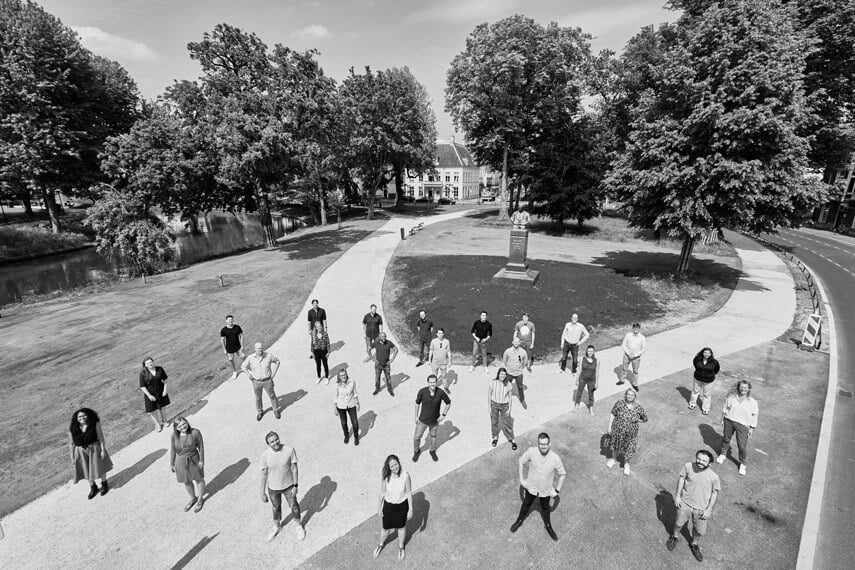One of the most common challenges faced by those in leadership roles managing User Experience (UX) teams is low morale among the designers. Despite having opportunities to work on challenging projects, the designers are dissatisfied at work. They feel undervalued and overburdened, because often they are not professionally challenged. The quality of their work suffers.
Facing a myriad of obstacles including pressure on deadlines and work quantity and nowhere to turn, they are naturally unhappy and want to leave the company. At the same time, other teams such as Product Engineering are unhappy about the outputs of the design team. They can’t understand why UX quality isn’t superior despite having a dedicated set of UX designers.
What can you do to change the situation as a UX manager?
The first step is to understand the challenges faced by your team. UX design is a design discipline with its own dynamics. It’s essential to understand the basic tenets of UX design profession before venturing to solve the challenge of low morale in the team.
Understanding the dynamics of a UX team
UX designers are highly creative professionals who follow certain processes to come up with innovative designs to support users. UX design is a collaborative process involving numerous stakeholders from users to product developers. Apart from collaborating across the team boundaries, UX design also requires a community of designers who support each other within the team.
Challenges faced by UX teams
The primary challenges faced by UX designers, and therefore the UX team morale, can broadly be classified under the following heads.
The challenge of not having a community of designers
Often designers find themselves working in silos with minimal interaction with other designers in the organization. Even though they might be reporting to the same UX Manager as per their organizational hierarchy, they do not feel connected to other team members in a meaningful way. This has the catastrophic effect of designers working as lone wolves without any sense of community. If things go wrong, they’re left unsupported and when things go great, they’re left unappreciated.
The challenge of unclear roles and responsibilities
It’s interesting to note that UX design is an aggregate term for various subdisciplines that fall under User Experience. For example, Interaction design, Visual design, Information design all fall under the umbrella term “UX design.” Not having clearly defined roles and responsibilities in the team leads to a chaotic work environment where everyone might feel like they’re being stepped on their toes by others. Likewise, people outside the UX team do not understand the roles and responsibilities of a UX designer, which also leads to tensions. Therefore, it’s important to clearly define the key roles and their responsibilities in a design team.
The challenge of being treated as a commodity service provider
In many organizations, UX design is considered as a service provided for product development. Engineers often dictate terms as to how a UX design should be based on their own product design. UX designers are minimally or even rarely involved in the initial phases of the process where they could have reached out to users to understand their pain points and requirements, and influenced the direction of a project. As a consequence, UX designers feel their work is undervalued. In addition, since time is a costly resource, designers are rushed to finish their work without asking too many challenging questions. It often also happens that UX designers are forced to skip some essential steps in their designing process such as conceptual modelling, thereby de-professionalizing their work.
Morale-boosting strategies
Once you understand the dynamics of a UX team and the challenges the designers are facing, it’s time to proactively take steps to improve the situation. The morale-boosting strategies outlined here are based on a deep insight into the design process and will be useful in developing your dream team, one with happy and motivated designers producing high-quality designs to optimally support your products and services.
Define a clear team structure and processes
One of the most important requirements for an optimally functioning team is the clear definition of roles and their responsibilities. Without this, teams will experience confusion and friction among members, and external team members will often not understand their work. For example, a team member providing feedback on a design might be considered offensive by the designer in the absence of a clearly defined reviewing process. Or an external team member may ask an interaction designer to design an icon for them and think they are being uncooperative when they refuse. Read our article “Building a Successful UX Design Team > Processes and workflows for design teams” to know more.
Foster team bonding and collaboration
In most companies, designers are assigned to different projects with barely any interaction as they work on theirprojects. As a result, designers often feel disconnected from their team. As a UX Manager, you can take steps to bring them together to work collaboratively. When designers are working together, there’s more room for ideation, collaborative problem solving, standardization of practices, and growth in the profession. Consider a situation where a junior designer is being pressurized by a member of the product development team to create a certain design that doesn’t fit the design principles. If the junior designer can turn to his team and ask for support from a senior designer or a UX architect, there can be more effective conversations with the product team and an agreeable solution can be reached. If the junior designer didn’t have this kind of support, he’d most likely agree to the design given by the developer without proper conversation and feel frustrated about his work. There are many such situations commonly faced by designers in their daily work which prove how important it is to have a strong design community.
To foster a stronger sense of team, it’s important that designers spend time working together in a collaborative environment on a regular basis. Design Studio Time by Keen Design offers an elegant solution for designers to work together as a team and collaborate from wherever they’re working.
Recognize and reward
Recognition and rewards are proven strategies for boosting morale in a team. Create opportunities for designers to showcase their work and reward outstanding contributions. When this happens periodically, designers are motivated to excel in their work and share it with the team. Encourage team members to exhibit not only designs, but also to share their knowledge in their areas of expertise. For example, arrange lunch talks for designers to speak on various topics like the most difficult design problem they worked on, the most creative solution they’ve designed or a futuristic new technology in design. Other helpful rewards for designers are attending professional conferences and workshops such as the most recent UX Horizons conference last year. As a UX leader, you might also be interested in our blog 7 Essential Skills for UX Leadership.
In a nutshell
You first need to understand the dynamics of the design process and the various specialties within UX design. This helps you understand the challenges that your designers are facing and the reasons why they might be demotivated. Then you’re ready to take steps using the strategies mentioned here to boost morale of your design team. Curious to read some practical tips on how to improve happiness of your team?






